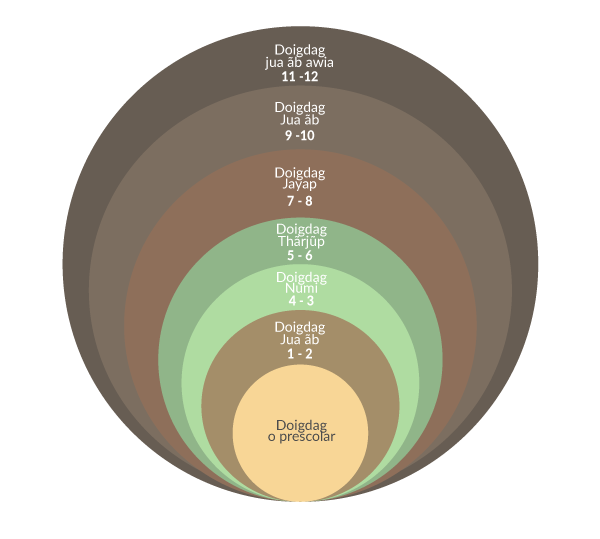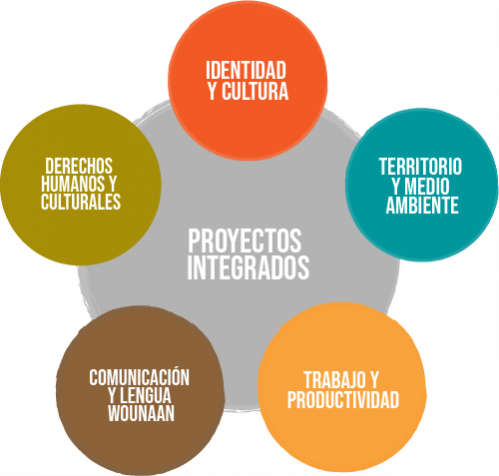Accessory designs can influence from who we are interested in, how interactions develop, as well as exactly what do drive them to stop. Your own attachment looks are formed in infancy but turns out to be a model where person connections tend to be based. Wearing down the different accessory types, we examine the methods which they influence relationship plans and motivations. Having an insight into your very own securities and insecurities often helps help the habits in your dating existence and safeguard your connections in the long term too.
Attachment styles: understanding an attachment design and why is it essential in connections?
Your connection looks are a pervasive feature within engagement method with all the individuals surrounding you. An attachment design can be described as how you associate with some other people1. At first evolved and evaluated between baby and caregiver interactions, research into connection theory has actually advanced to explore how this becomes a template for mature romantic partner interactions.
Accessory idea was initially suggested by John Bowlby, who was simply thinking about the highly distressed response of babies separated off their caregiver 2. Coming from a psychoanalytical background, Bowlby mentioned this particular pattern of conduct ended up being widespread across an array of varieties, not simply real human. He suggested that staying in close proximity with your caregiver was an evolutionary method to be certain success, and therefore watched the attachment conduct program as a core motivational program for survival2. Researching and tinkering with peers, they determined there were three standard kinds of response: safe, avoidant and anxious.
Bowlby thought that the infant-caregiver connection classified the human experience âfrom cradle to grave’, influencing scientists Hazan and Shaver (1987) to go on it one step more and apply Bowlby’s suggestions to adult romantic relationships2. They verified a few functions are provided by both different relationships; affixed infant-caregiver and connected adult connections can both be seen as features of the same accessory behavioral and inspirational system. Ever since then, study into accessory principle might significantly expanded and, considering the personal and intellectual systems which are activated during development, attachment designs are usually quite stable.
Building throughout the study and differing viewpoints, scientists and psychologists provided rise to differences of connection theory based on Bowlby’s work as a kick off point. Probably the most more popular models of adult attachment could be the Bartholomew and Horowitz (1991) design, laying out at the center, protected and insecure styles. These are after that more partioned into protected, stressed and avoidant styles3. Getting straight into the center of this matter, these sizes tend to be furthermore recognized as protect, anxious-preoccupied, dismissive-avoidant, and fearful- avoidant. Now why don’t we see what each of these actually suggest, and just how it plays call at your connection.
Attachment principle: relationship connection types defined
Before busting it down, it is very important realize that these features are viewed dimensionally and it may change in degrees from individual to individual, with room a variety of specific placement within a range. These come across genesis in an infant’s relationship making use of their major caregiver, which then creates your way of xxx attached relationships and becomes a template of concerning other people. This is your instinctive accessory style.
However, keep in mind that men and women are sentient beings, capable of modification and progress in their physical lives. Although relating to connection idea, these replies tend to be hard-wired into our very own mental and intellectual operation, individuals can adapt and change their own attachment types in adulthood for more practical and rewarding relationships.
Now let us take a look at different kinds of connection types:
A protected accessory looks are considered the best associated with four xxx connection types and tightly attached adults are generally more happy plus satisfied within their relationships. Having experienced a safe basis when you look at the connection with regards to major caregiver, they tend feeling safe and inspire good commitment characteristics in adulthood, such as for instance autonomy, support, and honesty3. They truly are comfortable to depend on others and similarly support those around all of them, becoming psychologically current and involved.
This reflects that the person felt safe inside their main attached infant union, their own caregiver getting psychologically available, attuned for their needs and regularly truth be told there. Today in adulthood, a securely affixed specific reacts from an optimistic, positive and protected point of view, assisting a powerful feeling of identity and close connections1. They tend to build flourishing and personal connections.
Report sentence: “I really don’t see it is difficult to-be near other people, and do not bother about being alone or rejected”.
On flipside of protected attachment, you will find three different styles which fall about insecure accessory range.
Children exactly who created an ambivalent/anxious attachment often be adults with a preoccupied attachment pattern. From someplace of insecurity, they search acceptance, struggle to trust in connections and anxiety getting rejected, which can encounter as what exactly is described nowadays as a âclingy spouse’. Trying to their own associates to accomplish or rescue them, these are typically driven by fear of abandonment and will understand activities as affirmations of their insecurities as opposed to thinking or trusting their lover as well as their love3.
This can, in turn, be a self-fulfilling prophecy, pressing their partner out, and existing between an unpleasant juxtaposition of addiction and anxiousness. This interacting with each other pattern arises from the main caregiver who had been emotionally unavailable and insensitive, leading to distrust and self-doubt in adulthood.
Report sentence: “I would like to be near to my personal partner, but believe unpleasant existence too real together. I am concerned that I appreciate the relationship many they will certainly leave me”.
Young children whom practiced avoidant parts and their major caregiver may go onto develop dismissive attachment styles in adulthood. An integral attribute of dismissive prevention is psychologically distancing from your own lover, striving to produce âpseudo-independence’, effortlessly doubting emotional link and closing down psychologically.
These grownups satisfaction themselves on being self-sufficient, but towards hindrance of mental intimacy. Frequently work and various other projects are placed as a higher priority than passionate interactions, as well as in interactions, liberty is essential, some even choosing to end up being unmarried instead of place themselves in a vulnerable position in a relationship. Avoidant child-rearing style offers surge for this style of routine â a caregiver who was psychologically unavailable and not current and attached, thus pushing the youngster to manage by themselves from a really early age. Adults with dismissive-avoidant attachment are inwards and emotionally closed.
Statement phrase: “connections are not that crucial, I am able to maintain myself “.
Raising up with the knowledge of a disorganized connection in a single’s major caregiving relationship may result in a scared accessory style in adulthood. Differing to a dismissive style, they really want near relationships, however when they become as well near, they revert to youth traumatization and withdraw 1. Because of this, they really want to get both not too distant or too far from others. In the place of closing down their particular feelings this causes high amounts of anxiousness, and can end up in cluttered reactions, the mental rollercoaster present in remarkable and turbulent relationships3.
Desiring to-be connected but simultaneously fearing abandonment and harm, they swing between connection and disconnection without a frequent comprehension or method of how to get their needs met. This causes an ambivalent believe that is difficult to balance. This style is occasionally caused by youth traumatization or misuse, wanting security from a caregiver who is also the origin of discomfort, creating a disorganized mature emotional response system.
Report phrase: “i must say i wish to be near my personal lover, but worry that they’ll harm myself thus can not trust them”.
Which attachment design perform i’ve?
These qualities fall on a range, and a person can hence have a greater characteristic in certain areas, and lower an additional. The four various attachment styles can be viewed in a quadrant upon which you can easily fall, and so these definitions can be found on a scale, even more broadly experienced actually as compared to tight meanings in some recoverable format. You can also discuss some faculties, for instance, if you had been on the edge of anxious-avoidant and safe. As men and women are thus varied, thus could be the understanding of each person’s accessory style. This classification is visible as a guiding blog post for your own design, not always a strict meanings thereof.
Thinking which attachment style you predominately have? Simply take EliteSingles’ connection style quiz right here:
The good thing is that although accessory types are rather secure, it is still feasible to build up a safe attachment design, teaching themselves to improve the features and expand secure xxx attachments, giving your connection the best possiblity to succeed. We have been constantly ready growing and broadening our mental cleverness, whenever we are eighteen or eighty years of age, really never too early or too-late to develop an âearned secure accessory’ 1. Although nurture does impact development, people may also be independent animals who is going to contour their own future, picking what type of relationships to create and how their unique primary affixed connections development.
EliteSingles’ leading suggestions to reform relationships and reinforce a protected attachment design:
Test you to ultimately create on the strong factors. Get center â just because you fall into an insecure connection design doesn’t mean you simply can’t have an effective connection and that you cannot establish better relationship habits. Get this understanding and rehearse the knowledge to encourage you to make the essential changes and development. Utilizing connection theory and creating your own secure attachment style just impacts your own romantic interactions, but additionally filters into areas in your life. It may expand your own sense of identity, confidence and freedom, which makes it a great endeavor to try.
Resources:
[1] PsychAlive. 2016. What is the connection style?. Bought at: https://www.psychalive.org/what-is-your-attachment-style/
[2] Fraley, C. 2010. A brief history of Adult Connection Theory and Research. Available at: https://internal.psychology.illinois.edu/~rcfraley/attachment.htm
[3] Firestone, L (PhD). 2013. Just how your own Attachment Type Influences Your Own Union. Therapy Nowadays. Available at: https://www.psychologytoday.com/blog/compassion-matters/201307/how-your-attachment-style-impacts-your-relationship





